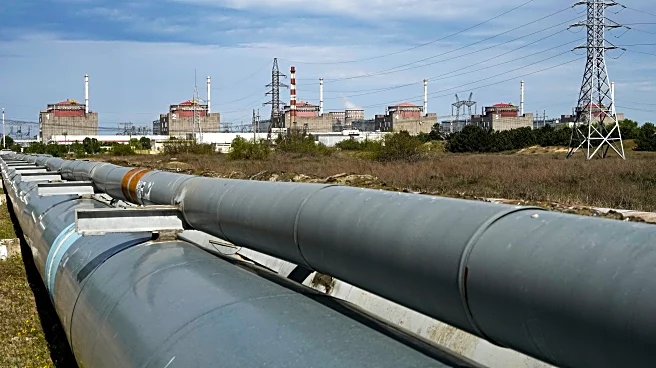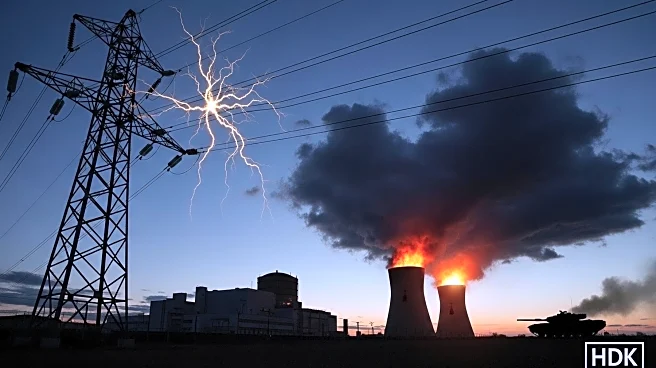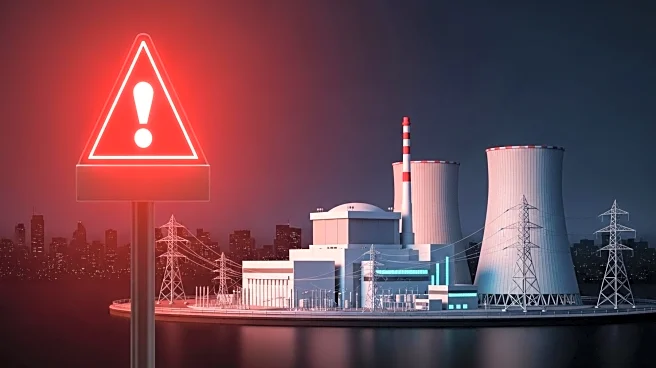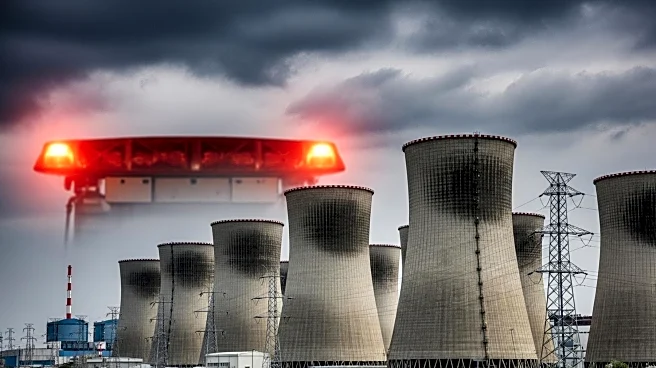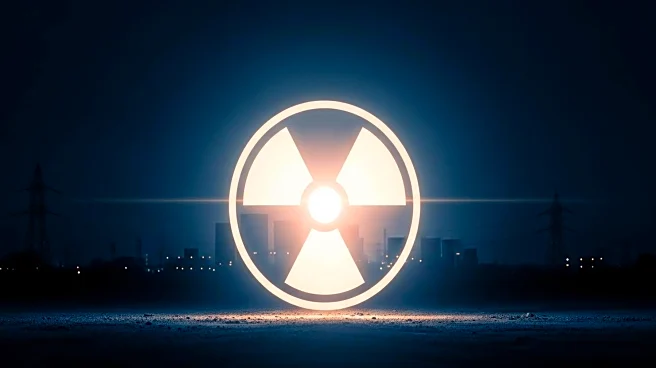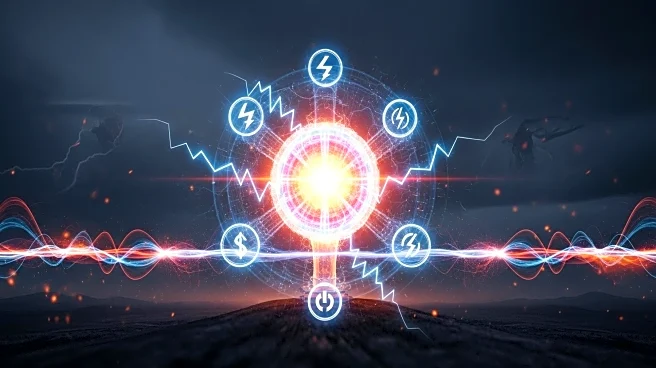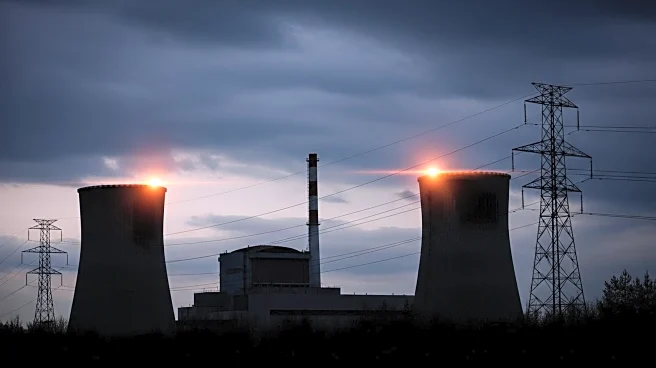What's Happening?
Ukraine's President Volodymyr Zelenskyy and the head of the United Nations' International Atomic Energy Agency (IAEA), Rafael Mariano Grossi, have raised alarms over the safety risks at the Zaporizhzhia Nuclear Power Plant. The plant, located in southern Ukraine and currently under Russian control, lost its external power supply over a week ago due to ongoing military conflict in the region. Emergency diesel generators are currently providing power to the plant's cooling systems, which are crucial for maintaining the safety of its six shutdown reactors and spent fuel. Despite the generators' ability to cope with the current demand, both Zelenskyy and Grossi have expressed concerns about the sustainability of this situation, as the generators were not designed for prolonged use. The IAEA has emphasized the need to restore off-site power to ensure the plant's safety and is in communication with both Russian and Ukrainian officials to address the issue.
Why It's Important?
The situation at the Zaporizhzhia Nuclear Power Plant is critical due to the potential risk of a nuclear catastrophe if the plant's cooling systems fail. As one of the largest nuclear plants in the world, any incident at Zaporizhzhia could have severe consequences not only for Ukraine but also for the broader European region. The ongoing conflict and the plant's precarious power situation highlight the vulnerabilities of nuclear facilities in war zones. The IAEA's involvement underscores the international community's concern over nuclear safety and the need for diplomatic efforts to prevent a disaster. The plant's reliance on emergency generators for an extended period is unprecedented and poses a significant challenge to maintaining nuclear safety standards.
What's Next?
Efforts are underway to restore the Zaporizhzhia plant's connection to the external power grid. The IAEA is actively engaging with both Russian and Ukrainian authorities to facilitate this process. The plant's current fuel reserves for the generators are sufficient for more than ten days, but the situation remains urgent. The international community is likely to continue monitoring developments closely, and further diplomatic interventions may be necessary to ensure the plant's safety. The ongoing conflict in Ukraine adds complexity to these efforts, as military activities in the region continue to pose a threat to the plant's infrastructure.

